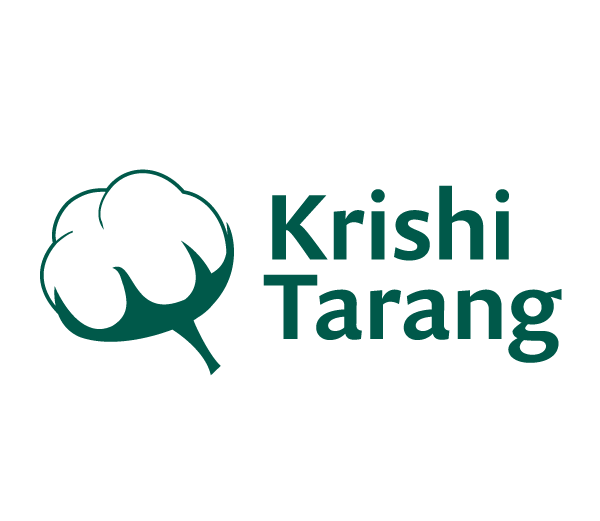Krishi Tarang – a digital advisory service for Gujarati farmers

2016
53,851
Gujarat, India
Swiss Re Foundation, Anonymous
Overview
Gujarat is PxD’s first site of operation in India and Krishi Tarang is our oldest continuously delivered service. Because PxD fully owns and operates Krishi Tarang, the service acts as a “sandbox” for testing new ideas.
Krishi Tarang’s unique operational context means that we can use it to advance key product development and research activities, elaborate our theory of change, pilot new service and product offerings, and explore new types of collaboration with private organizations to more effectively connect farmers to markets.
Through the course of 2021 and 2022, support from the Swiss Re Foundation has enabled us to explore valuable new relationships and partnerships with private sector firms and to bring a wider range of services to smallholder farmers.
The service
Krishi Tarang is a two-way digital advisory service consisting of two principal components: (1) a weekly advisory service, and (2) a hotline service. The weekly advisory service delivers messages to farmers customized to their crops, season, local farming conditions, and language. The hotline offers several features to farmers including the ability to record a question that is answered by an agronomist within 48 hours; access to a personal inbox of previously asked questions and their answers from agronomists; the ability to listen to previous weekly advisory messages, and access to a curated menu of frequently asked questions and their answers (FAQs).
In 2021, farmers subscribed to Krishi Tarang received agronomic advice tailored to the cropping cycles of cotton, groundnut (peanut), soybean, sesame, pigeon pea, and castor oil plant (Kharif crops), and wheat, cumin, mustard, potato, onion, chickpea (gram), coriander, and fennel (Rabi crops). Cotton and wheat are the principal cash crops grown by smallholder farmers registered on the service, and wheat forms an important component of household nutrition.
The key role of Krishi Tarang in developing our services is evident in the learning it has generated:
PxD’s work leveraging RCTs, A/B tests, data science, and technology has generated a body of evidence around the effectiveness of mobile phone-based digital extension in Gujarat:
- Cole & Fernando (2020) evaluated the beta version of PxD’s service in 2013 and found that information dispensed through the mobile phone-based advisory service increased agricultural knowledge and self-reported adoption of recommended practices. The authors also observed that the service increased farmers’ trust in digital agricultural advice and that farmers were willing to pay for the service. They did not find a significant increase in yields.
- Fernando (2021) (summarized here) examined the impacts of the AO intervention on farmers’ social networks and where they get their agricultural information
- Cole & Sharma (2017) found that supplementing soil health cards (SHCs) with a simplified card and an audio, or video, guide dramatically increased comprehension and trust.
- Cole et al (2020) found that customized fertilizer recommendations based on a plot-level soil test via a soil health card and audio messages (delivered through Krishi Tarang) improved knowledge and self-reported adoption of recommended fertilizers; however, farmer yields were unaffected when compared to farmers that received the Krishi Tarang service without customized fertilizer recommendations.
- An A/B test by PxD promoting cumin (a high-return, high-risk crop) through mobile phone-based advisory led to an increase in the total cropped area of cumin and improved fungicide use; however, it did not lead to significantly more farmers switching to cumin.
- At the beginning of the 2016 Kharif season, PxD implemented an evaluation (summarized in this blog) to test four different narrator voices to see how they impacted farmers’ listening rates. No statistically significant differences were observed among the listening rates across the four groups (i.e four voices). No one voice emerged as the best choice.
- During the 2017-2018 Rabi season, the team ran an A/B test to understand the impact of removing the 8-second jingle from outbound push calls on users’ average listening rate. Farmers in the treatment group had a 17.8% higher unconditional listening rate higher than farmers in the control group, suggesting that the jingle may reduce engagement.
- In 2018, the team ran an A/B test focused on measuring the impact of message length (including allowing farmers to express a preferred message length) on farmers’ engagement. The experiment revealed that simply asking farmers about their preferences for call frequency led to higher pick-up and listening rates. Farmers who were not asked about their preference, but automatically received two shorter calls per week, were no more likely to answer the call than those who received one longer call, but when they did answer, they listened to more of the agricultural content.
Way forward
In 2021, PxD implemented two primary projects in Gujarat. First, with funding from the Swiss Re Foundation, PxD implemented a project focused on assessing the viability of partnering with the private sector to increase farmers’ access to/benefits from complementary services while generating revenue from the private sector organizations.
Second, the PxD research team conducted a series of product development and pilot activities to assess the feasibility of collecting timely, locally-granular information on topics like crop stages, crop health issues, input availability and prices, plot boundary coordinates, and other information that can benefit smallholder farmers without deploying a field team (i.e., “crowdsourcing” this information from within farmers’ communities).
The PxD team also began exploring partnerships with organizations that facilitate self-help groups (SHGs) to identify opportunities to support women in rural areas.
In 2022, PxD began the scoping work required to pilot an intervention to distribute leaf color charts (LCCs) to Krishi Tarang users.
Advisory push call on Pink Bollworm pest management and monitoring
Namskar! This is the Krishi Tarang agriculture information service. In today’s call, we will talk about the management and prevention of Pink Bollworm pests in your cotton crop. Pink Bollworm infestation generally commences during the flowering stage of the crop. Hence it is advised that you set pheromone traps in the cotton field before flowering starts. Please remember to change the lure of the pheromone trap every three weeks and to set the height of the trap at one foot above the height of your cotton plants. You can set five or 6 pheromone traps per Bigha of the cotton area. Monitor traps regularly and if you observe more then 2 brown pink Bollworm moths per trap then immediately start spraying egg suppressant bio-pesticides like Neem Oil. Please remember to keep monitoring the traps and any infestation of Pink Bollworm on flowers or bolls regularly to inform a descision to start spraying pesticides. This was the information for the current week. Thank you!

Make an Impact Today

